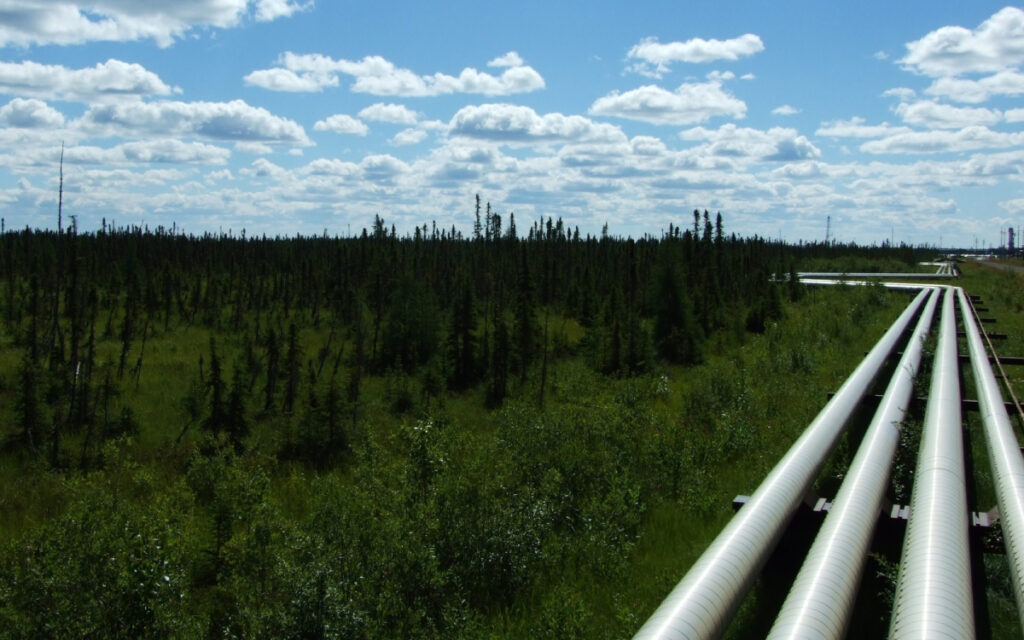
Oil sands project in northern Alberta. Photo supplied to Canadian Energy Centre
The world needs more Canadian energy, not less
The Paris-based International Energy Agency (IEA) has released its latest outlook for global energy supply and demand through 2050.
Oil and gas will continue to be central to energy markets even as the world moves more quickly to reduce emissions, the IEA projects.
Here are the facts.
Scenarios
The IEA models three outlook scenarios:
- The Stated Policies Scenario (STEPS) shows the current trajectory of the world’s energy systems based on existing government policies and policies that are under development.
- The Announced Pledges Scenario (APS) includes recent major national announcements as of the end of August 2023, both 2030 targets and longer-term net zero or carbon neutrality pledges, regardless of whether these announcements are legally binding.
- The Net Zero by 2050 Scenario (NZE) is a “normative” or prescriptive scenario that shows one pathway to reach the goal of net zero emissions. It assumes unprecedented global cooperation, and the IEA acknowledges that the world is not on this trajectory.
Overall, the world will use much more or about the same amount of energy in 2050 than it did in 2022.
Driven by emerging economies in Asia, on the current path the IEA projects total world energy consumption will increase by 21 per cent over the next three decades.
With announced pledges, global energy needs will be about the same in 2050 as they are today, declining by just three per cent.
The IEA said continued investment in oil, gas and coal is essential in all three of its scenarios.
“It is needed to meet increases in demand over the period to 2030 in the STEPS and to avoid a precipitous decline in supply that would far outstrip even the rapid declines in demand seen in the NZE Scenario,” the agency said.
That investment and development should happen in Canada, where responsible, reliable producers and exporters are committed to emissions reduction.
Oil and gas in world energy markets
Oil and gas together supplied 53 per cent of global energy needs in 2022.
In STEPS, as more renewable and alternative energy comes online, by 2030 that share declines slightly to 51 per cent. In 2050, oil and gas will still supply nearly half – or 46 per cent – of world energy needs, the IEA said.
With announced pledges, oil and gas will supply 50 per cent of global energy needs in 2030, and still nearly one third – 29 per cent – in 2050.
Oil
In 2022, countries around the world consumed 96.5 million barrels of oil per day. On the current trajectory that use increases to 101.5 million barrels per day in 2030. By 2050 this declines slightly but is still higher than in 2022, reaching 97.4 million barrels per day.
With announced pledges, world oil demand dips to 92.5 million barrels per day in 2030. In 2050, demand declines but is still 54.8 million barrels per day.
In STEPS, demand for extra heavy oil and bitumen like what Canada produces rises to 5.5 million barrels per day in 2050, up from 3.7 million barrels per day in 2022. In the announced pledges scenario, this demand reduces but still remains strong, at 2.5 million barrels per day in the middle of this century.
The use of oil for non-energy purposes (like pavement, which improves in quality when using oil from Canada) increases in both scenarios, rising from five per cent of world energy use today to six per cent in 2050.
Natural gas
Last year the world used 4.16 trillion cubic meters of natural gas. On the current pathway, that increases to 4.30 trillion cubic meters in 2030 and settles at 4.17 trillion cubic meters per day in 2050, slightly higher than today.
With announced pledges, natural gas demand remains strong but reduces to 3.86 trillion cubic meters in 2030 and 2.42 trillion cubic meters per day in 2050.
Liquefied natural gas (LNG) demand rises in the current trajectory to 611 billion cubic meters in 2030, from 479 billion cubic meters in 2022. Trade continues increasing, reaching 656 billion cubic meters in 2050.
With announced pledges, LNG demand rises to 588 billion cubic meters in 2030 and remains at 242 billion cubic meters in 2050.
The IEA noted that LNG has become a base source of energy supply for Europe following Russia’s invasion of Ukraine. Longer-term growth is driven by growing economies in Asia.
As the IEA’s latest outlook once again shows, the world needs more Canadian energy, not less.
This article was first published by the Canadian Energy Centre on Oct. 24, 2023. Visit their website here.




















